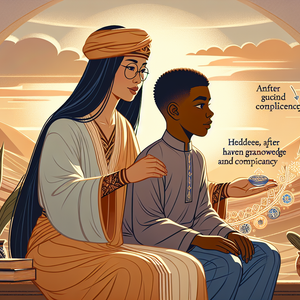The Art of Attraction: How Alex Jordan Capitalized on Curiosity

The essence of any successful attraction lies in its ability to spark interest. Alex Jordan was a master at this, creating an experience that promised an adventure filled with whimsy, wonder, and the unexpected. The House on the Rock is more than just a building; it is a vast complex adorned with eclectic collections, bizarre artifacts, and surreal landscapes designed to engage the curious mind. One of the standout features is the Infinity Room, an architectural marvel that extends out over the trees, providing breathtaking views that are both disorienting and awe-inspiring. This captivating space exemplifies Jordan’s understanding of human psychology; when people encounter the unusual, they are compelled to explore further. The unique experiences offered by the House on the Rock lead to increased foot traffic, and with it, greater revenue. Visitors are not just passive observers; they become active participants in the unfolding narrative of curiosity.
Creating an Intriguing Narrative
Beyond the physical structure, Alex Jordan crafted a compelling narrative around his creation. His backstory—the mysterious artist who built a house on a rock to house his vast collection of curiosities—adds layers of intrigue that encourage visitors to delve deeper into the attraction. By positioning himself as an eccentric visionary, Jordan captured public attention and fostered a sense of community among his visitors. The House on the Rock is not a static location; it’s an evolving story. Over decades, Jordan expanded the attraction, introducing new exhibits and features that kept the narrative fresh and exciting. This constant evolution ensured that even repeat visitors would discover something new, maintaining their curiosity and encouraging return visits. The dynamic nature of the House on the Rock is a testament to how storytelling can enhance visitor engagement and satisfaction.
Leveraging the Element of Surprise
Jordan’s success also stemmed from his ability to surprise visitors at every turn. Each room in the House on the Rock presents a new theme, often featuring unexpected juxtapositions that challenge perceptions. This element of surprise captivates guests and keeps them engaged throughout their visit. For example, the vast carousel—an intricate display of crafted animals and lights—stands in stark contrast to the more somber, reflective exhibits found in other areas of the house. This deliberate juxtaposition ensures that visitors remain on their toes, heightening their overall experience and leaving a lasting impression. By continuously surprising guests, Jordan ensured that the House on the Rock would be a topic of conversation long after visitors left its doors.
Harnessing Curiosity for Financial Success
The financial success of the House on the Rock serves as a testament to Jordan's keen understanding of curiosity as a driver of consumer behavior. By creating an environment that encourages exploration and discovery, he was able to transform fleeting interest into sustained engagement. The attraction not only draws tourists from around the globe but also generates substantial revenue through ticket sales, merchandise, and events. Moreover, Jordan's marketing strategy capitalized on the word-of-mouth generated by satisfied visitors eager to share their experiences. The buzz created by the unique and unexpected elements of the House on the Rock became a powerful marketing tool, attracting new audiences without relying on traditional advertising techniques. By fostering a culture of curiosity, Jordan succeeded in converting visitors into enthusiastic advocates for his attraction.
Alex Jordan's legacy highlights the profound impact of curiosity on consumer behavior and business success. By crafting an attraction that invites exploration and surprise, he transformed the House on the Rock into a financial powerhouse while captivating the imaginations of millions. His story illustrates that fostering curiosity can lead to a thriving business model and a lasting legacy that inspires future generations. The House on the Rock stands as a monument to the art of attraction, reminding us that sometimes, the best way to capture interest is to embrace the unexpected. As visitors continue to flock to this unique destination, they not only seek adventure but also become part of a larger narrative that celebrates human creativity and curiosity.
Creative Experience Designer
Theme parks (like Disney), museums, art galleries, and tourist attractions
Responsibilities
Develop immersive visitor experiences that engage and surprise guests in attractions and museums.
Collaborate with artists and architects to conceptualize unique exhibits that tell a compelling story.
Conduct market research to understand visitor preferences and tailor experiences accordingly.
Required Skills
Strong background in design thinking and storytelling, with a portfolio showcasing past projects.
Excellent communication skills for collaboration across multidisciplinary teams.
Proficiency in design software (e.g., SketchUp, Adobe Creative Suite).
Visitor Engagement Manager
Cultural institutions, tourist attractions, and community centers
Responsibilities
Oversee visitor feedback initiatives to enhance attraction experiences and drive repeat visits.
Develop and implement marketing campaigns that leverage visitor stories and experiences.
Coordinate events and programs that foster community involvement and enhance visitor engagement.
Required Skills
Experience in customer service and community outreach, with proven ability to analyze visitor feedback.
Familiarity with social media marketing and content creation to engage audiences online.
Strong organizational skills to manage multiple projects simultaneously.
Curatorial Specialist for Unique Attractions
Museums, art galleries, and historical sites
Responsibilities
Research and curate collections that reflect the mission and story of the attraction.
Collaborate on exhibit design to ensure educational and aesthetic value.
Engage with the public through tours, talks, and events, sharing the narrative behind the collections.
Required Skills
Advanced degree in Art History, Museum Studies, or a related field, with knowledge of curation practices.
Strong presentation and public speaking skills to effectively communicate with diverse audiences.
Experience in managing collections and understanding conservation techniques.
Tourism Marketing Strategist
Tourism boards, travel agencies, and attractions
Responsibilities
Develop targeted marketing strategies to promote unique attractions and drive tourism.
Analyze tourism trends and visitor demographics to inform marketing campaigns.
Create partnerships with local businesses to enhance visitor experiences and increase attraction visibility.
Required Skills
Strong analytical skills with experience in digital marketing and social media strategies.
Proven track record of successful campaign management and brand development.
Knowledge of SEO and content marketing best practices.
Architectural Space Planner
Architectural firms, design consultancies, and large-scale attractions
Responsibilities
Design and plan functional, aesthetic spaces within attractions that maximize visitor engagement.
Work closely with stakeholders to ensure designs align with the overall vision and operational needs.
Conduct site assessments and feasibility studies to inform design decisions.
Required Skills
Professional degree in Architecture or Interior Design with relevant certifications (e.g., LEED).
Strong visualization skills, with proficiency in CAD software.
Ability to balance creative design with practical constraints and visitor flow considerations.


